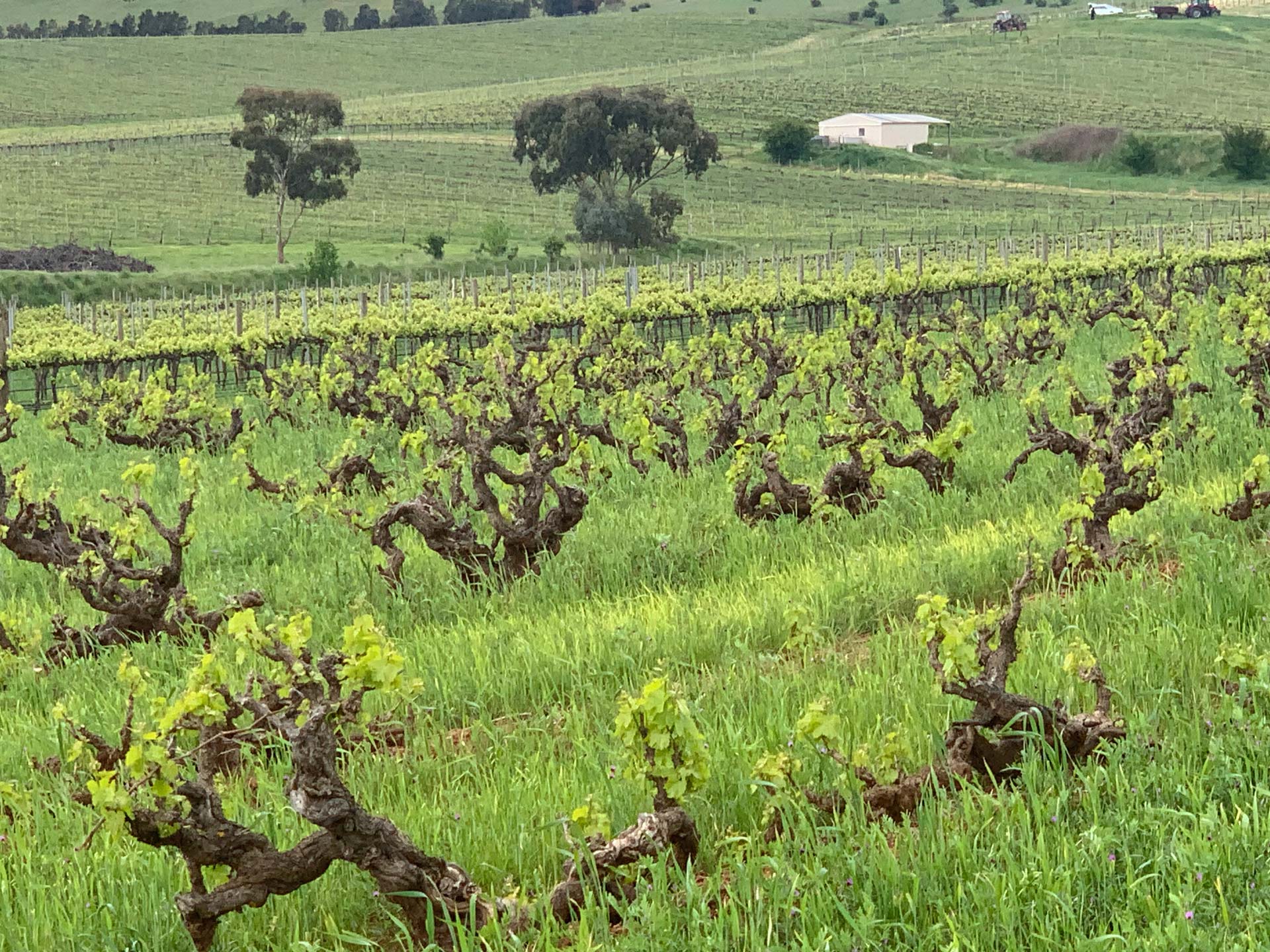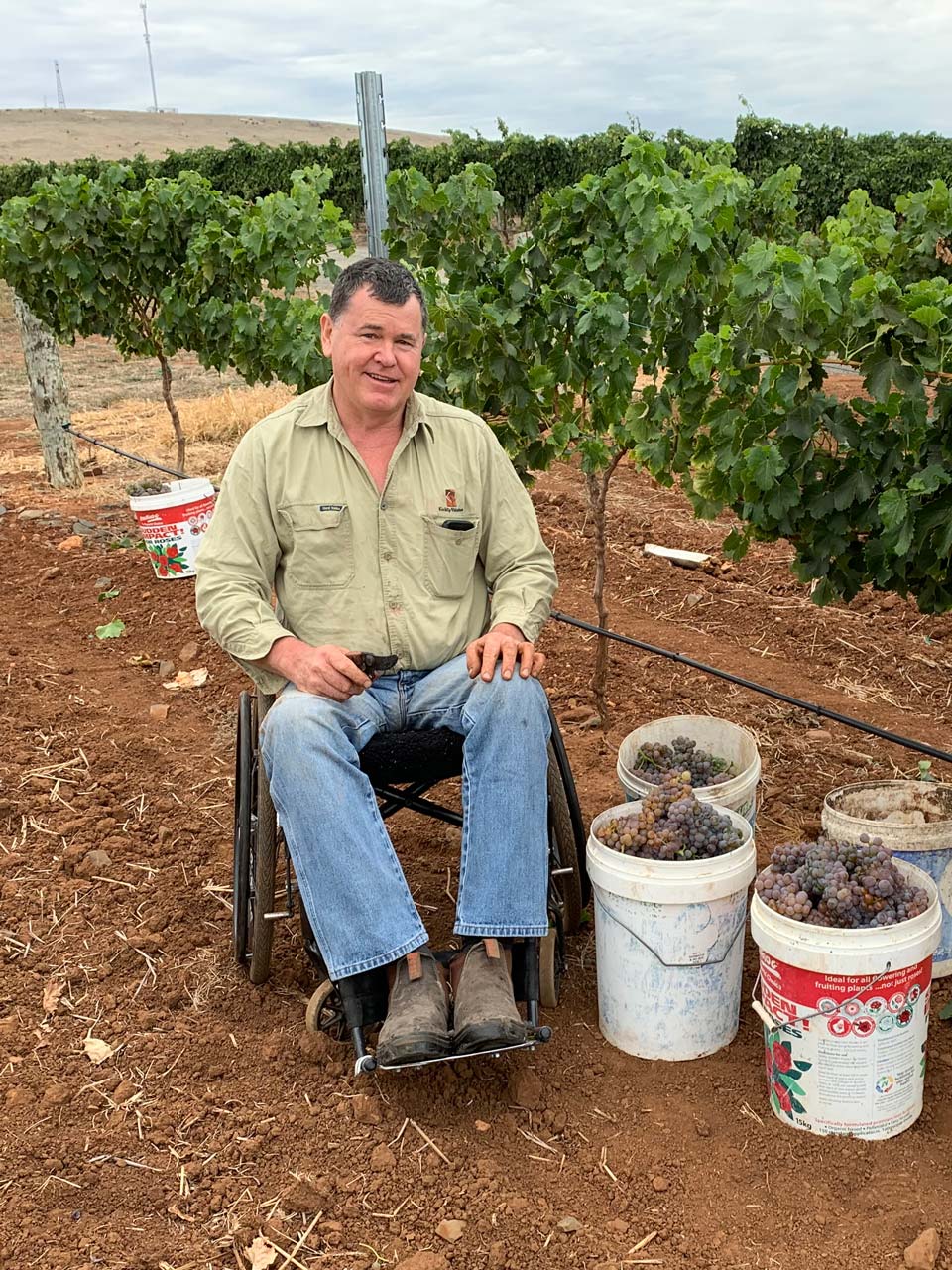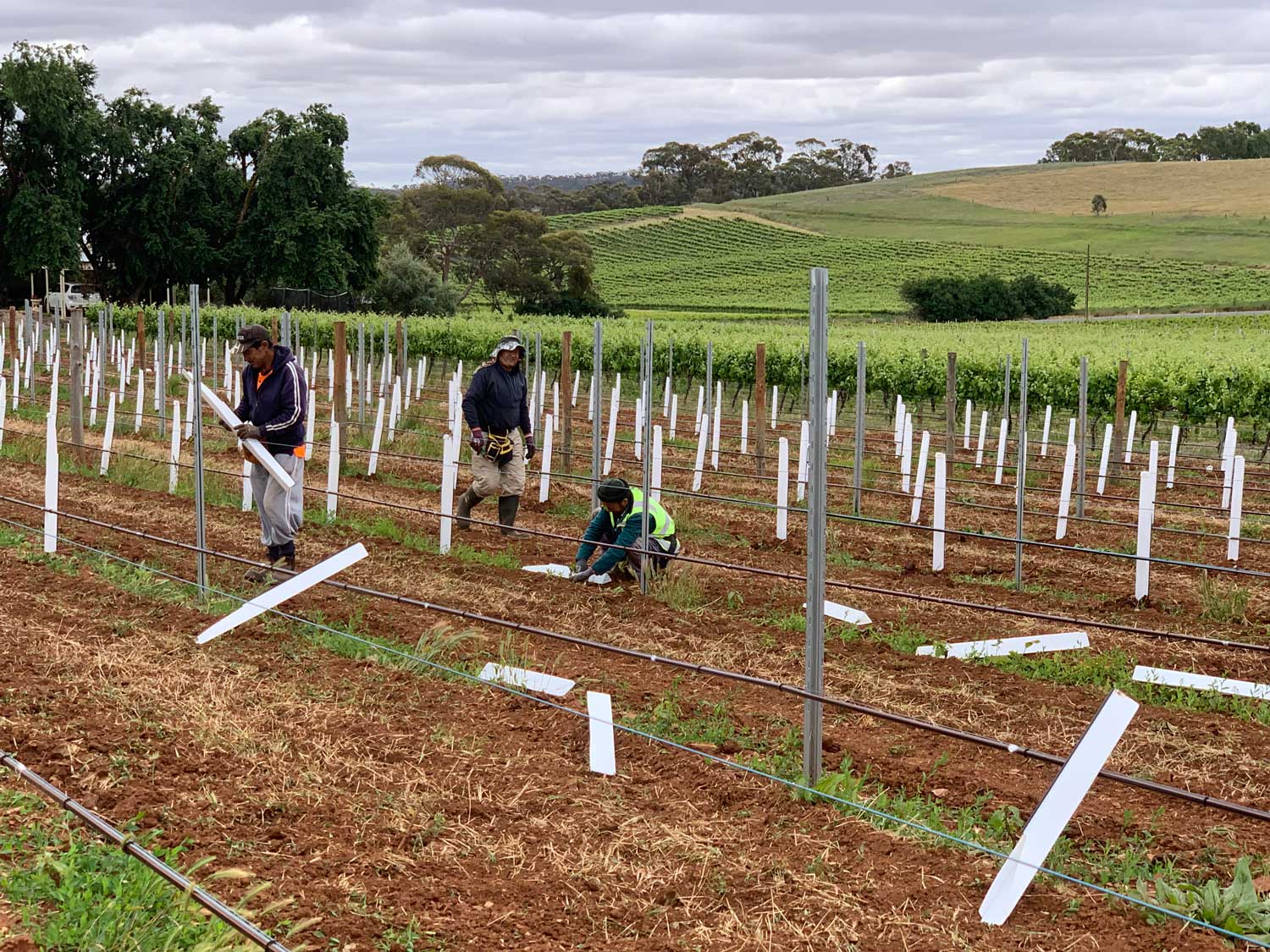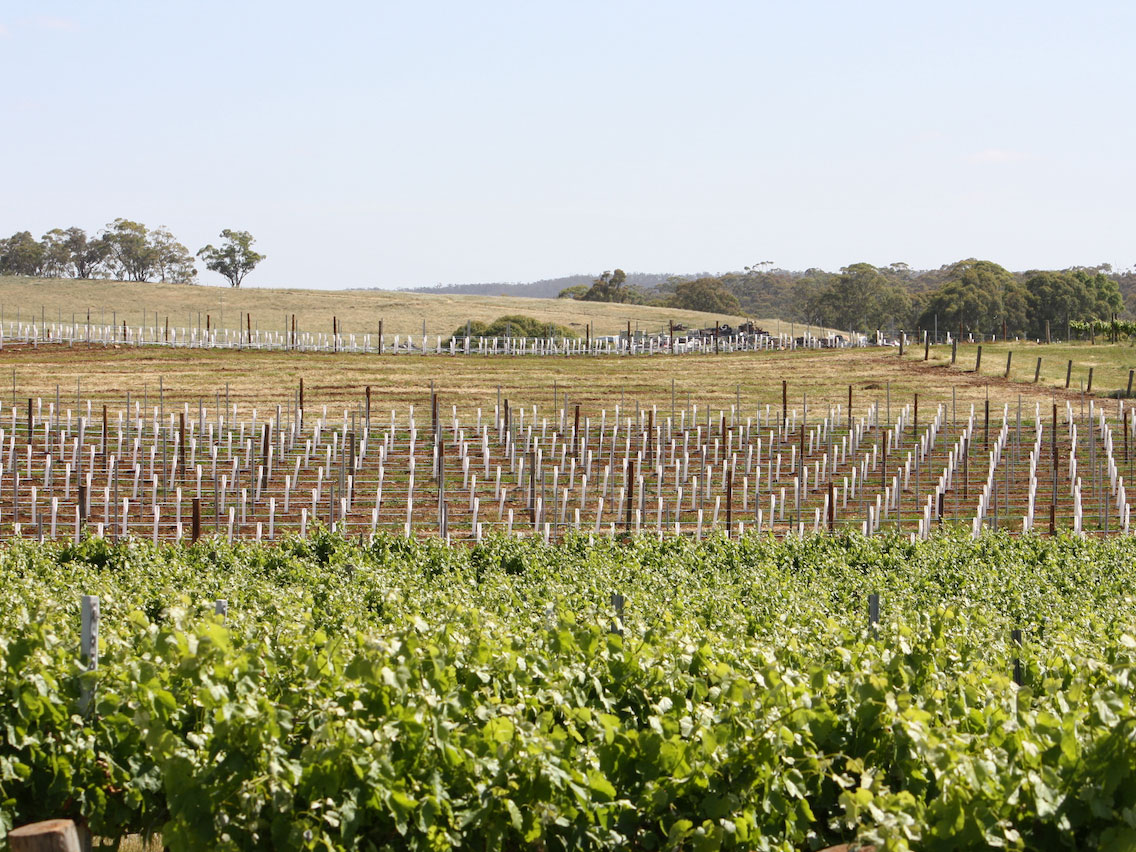Artwine’s Springfarm Vineyard in the Clare Valley is home to eight different varieties, with a distinct lean to emerging ones that have been chosen for their suitability to the changing climate. Owned for over two decades by Glen and Judy Kelly, the site complements their cooler Adelaide Hills vineyard, where their cellar door is situated. The Clare site contributes traditional varieties like grenache to the range, along with Mediterranean ones, like fiano, tempranillo, graciano and sangiovese, with new plantings yet to come online.
When the Kellys purchased the Springfarm vineyard in 2002 it was planted to cabernet sauvignon, riesling, gewürztraminer, cabernet franc and grenache. The following year, pinot gris, tempranillo and viognier were planted, with graciano the year after. Aside from the grenache and a little cabernet franc and riesling, the original plantings have made way for new varieties, due to disease, poor performance and general unsuitability.
The replanting was also joined by progressive new plantings of fiano, montepulciano, grenache gris and sangiovese, with the original tempranillo vines replaced with a better clone in 2021. More sangiovese was planted in 2022, along with falanghina and piquepoul. They believe that they were the first to plant those varieties in the Clare, along with being the first with fiano, graciano, viognier and grenache gris.
The Springfarm vineyard was originally intended as a contract vineyard, selling grapes to others. That all changed in 2008, when the Kellys decided to develop the Artwine label, with a specialisation in emerging varieties that better fit the climate. While the riesling survived, albeit in reduced concentration, those grapes are the only ones sold. “Riesling doesn’t align comfortably with the other wines produced,” says Glen. “However, a Clare Valley vineyard would almost be incomplete without an area of riesling, so the 40+-year-old vines have been retained.”
When they took over the site, the Kellys engaged viticulture contractors to manage the day-to-day running of the property, while Glen oversaw the development. For the last 15 or so years, Dick Bryksy of Kirribilly Viticulture has managed the site. “I used a couple of contractors prior to Dick, but none were sufficiently meticulous, paid so much attention to detail, and were so organised,” he says.
The vineyard occupies around 16 Hectares in the Spring Farm subregion of the Clare Valley, about 5 kilometres south-east of the town of Clare, at 460–480 metres elevation. When they took over the site, it was in quite a state of neglect. “It was the hectare of old grenache that was the major attraction,” Glen says. “These have subsequently been dated back to 1932, although my research suggests that 1932 was the first year that vineyard records were established in Clare, so I suspect they are older.”
The other major attraction was the potential for development, with more than half the area overgrown by blackberries and weeds. “We had previously developed a vineyard in the Barossa Valley, planting shiraz and cabernet sauvignon, but by the early 2000s, we were becoming increasingly interested in some of the newer varieties being introduced into Australia, ones that we’d experienced in our travels.”
One of those varieties was the Spanish star white grape, albariño. That was in 2009, when news broke that the cuttings imported by the CSIRO were actually of the French gape savagnin, they pivoted, planting fiano instead. That would prove fortuitous, with the first vintage winning major wine show golds and subsequently becoming a pillar of their portfolio. (‘True’ albariño was eventually planted, but in their Adelaide Hills vineyard, where 18 varieties are planted, and only a few traditional ones.)
Along with all those new varieties, row orientation was changed in some sections, running east to west rather than north to south. This reduces sunlight exposure, a negative in some places, but with an abundance, it’s a distinct advantage. Some riesling vines established along the hill contours were also replanted, as the ripening was very variable. The final instalment is the piquepoul. “That will complete the property – there is no room for anything else – unless the time comes when something has to be taken out!” says Glen.
That mix of varieties is also not just about climate suitability, with the attitudes of modern drinkers somewhat different to what they were back in 2002. “Tastes and preferences are changing,” says Judy. “These days, people are looking for lighter, food friendly wines. Furthermore, young wine drinkers want to drink something different from what their parents drank.”
The vineyards are managed with the care of the land and biodiversity as the driving focus, says Glen. “We are constantly caring for the soil, air, water and microbiology… Our fungicide program, although not organic, is based on a regime of copper and sulphur…. Some DMI fungicides are used if disease pressure is very high.
Wheaten straw is used as a mulch on poorer soils to help build carbon and strengthen the organic matter content over time. The population or worms has increased substantially since the application of the mulch, with the main benefit being less reliance on irrigation water.”
Cover crops are planted to fix nitrogen in the soil, then they are slashed with a front-mounted disc mower to act as mulch, protecting the soils from erosion, reflecting summer heat and reducing moisture evaporation in the mid rows. Both Artwine and Kirribilly Viticulture have become members of Sustainable Winegrowing Australia, with audits to become certified members scheduled for 2023.
Water access is one of the biggest limitations for the site, with no bore or dam. Murray water is used for irrigation, but every measure is taken to reduce the amount used. The grenache, riesling and cabernet franc are dry grown, while the pinot gris requires minimal watering, and usually only for fertigation (delivering fertiliser though the irrigation system). Additionally, new plantings have mostly been on rootstocks that reduce the need for irrigation.
“We are strong supporters of the notion that the best wines are made in the vineyard, not the winery,” says Glen, noting that their approach in the winery is one of minimal interference, with whites bottled early to capture freshness and new oak rarely used on reds. And it’s a process, from vineyard to bottle that has yielded great success.
“Artwine has won 35 Trophies over the past 11 years based on our philosophy,” says Judy. “Importantly, Artwine has won trophies for six of the eight varieties produced on the Springfarm Vineyard that are currently producing, which highlights its ability to grow high-quality fruit. The vineyard and its climate are ideally suited to the varieties we have chosen.”






